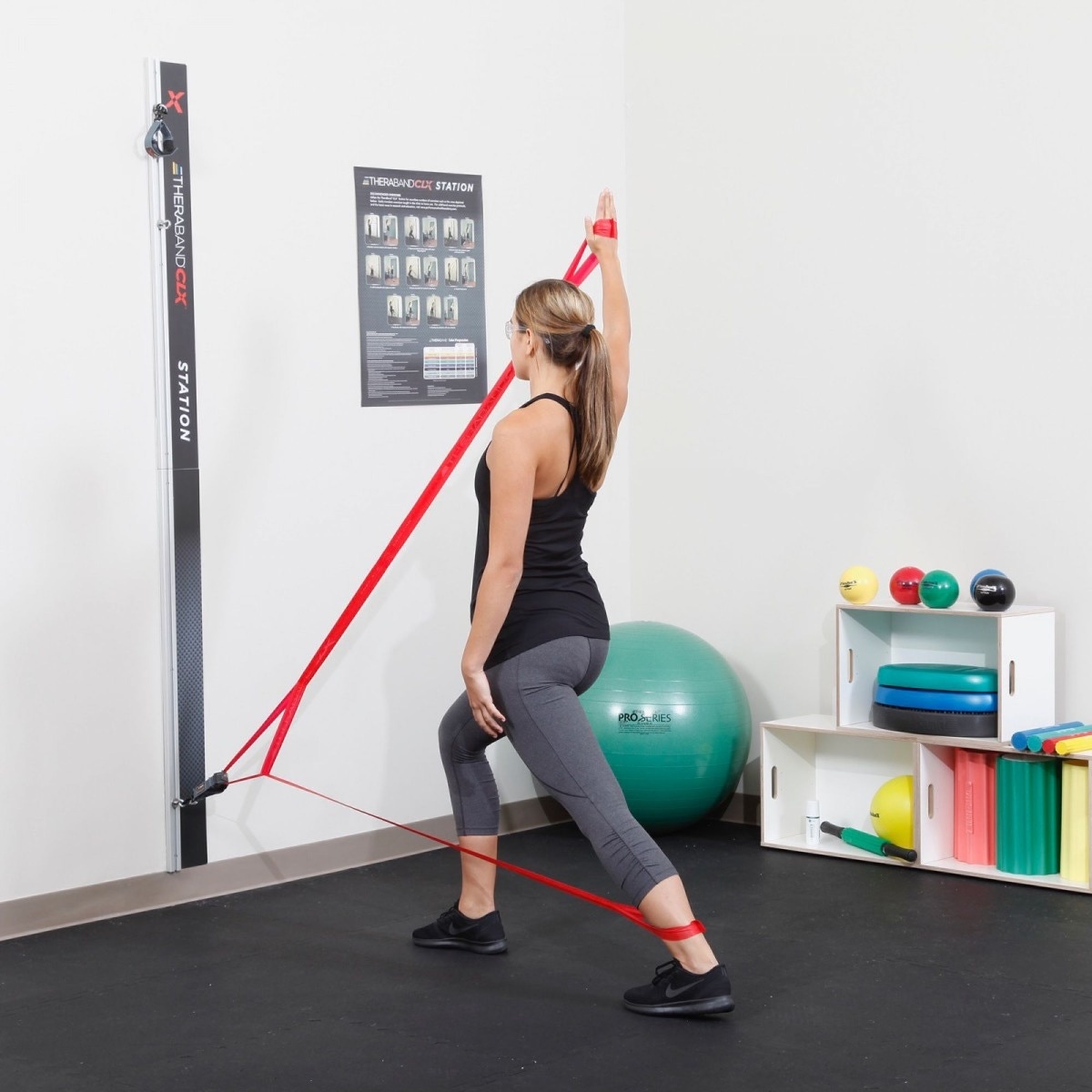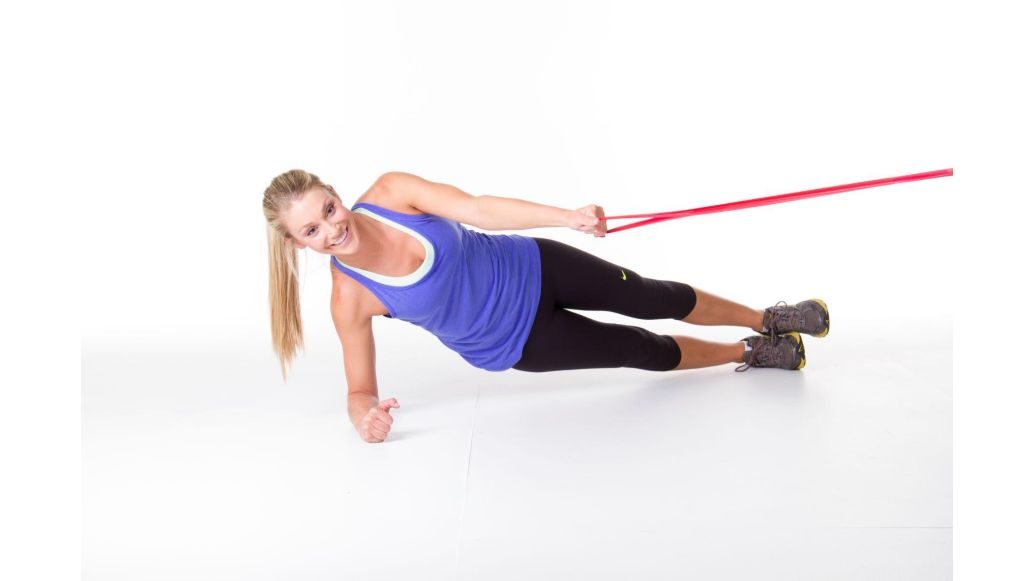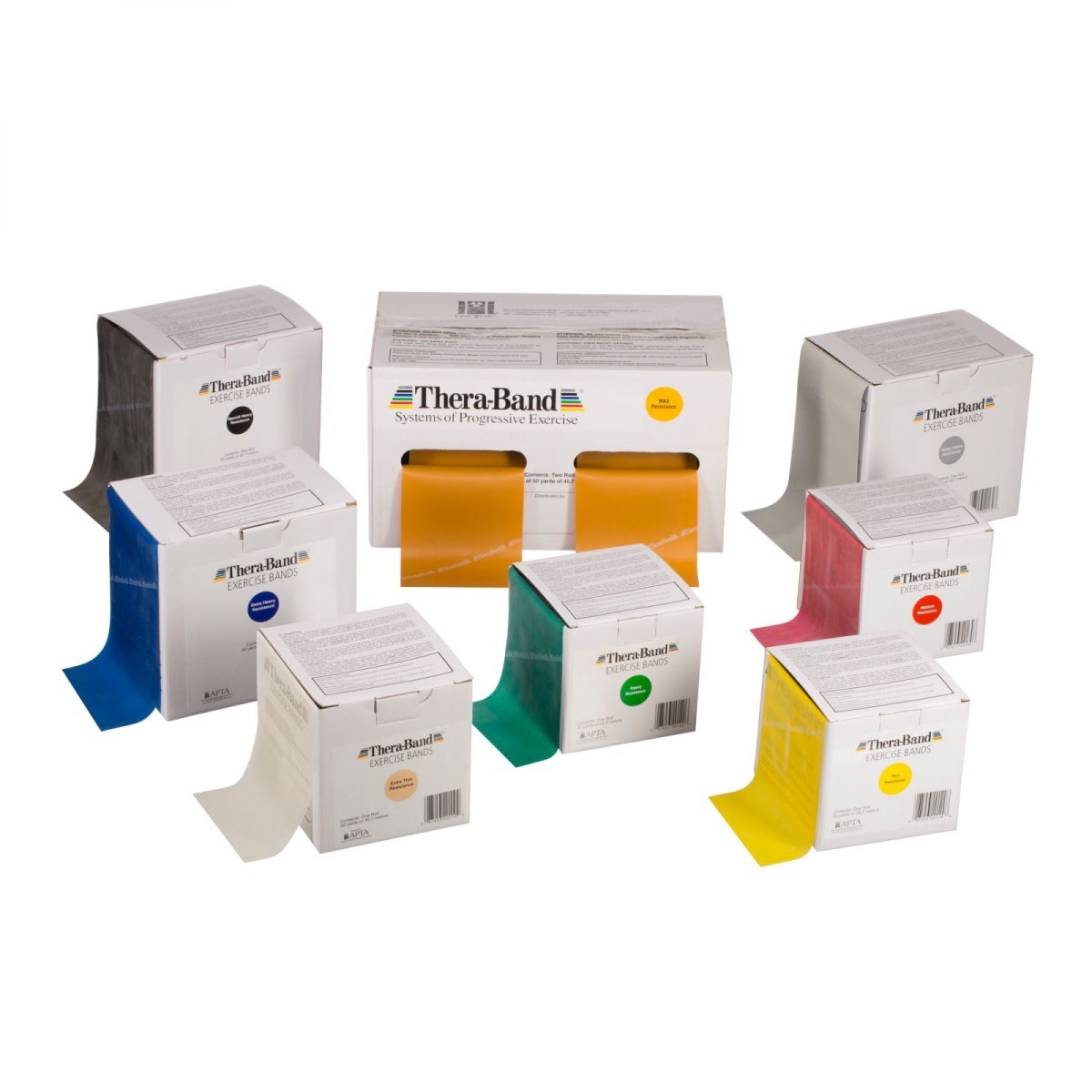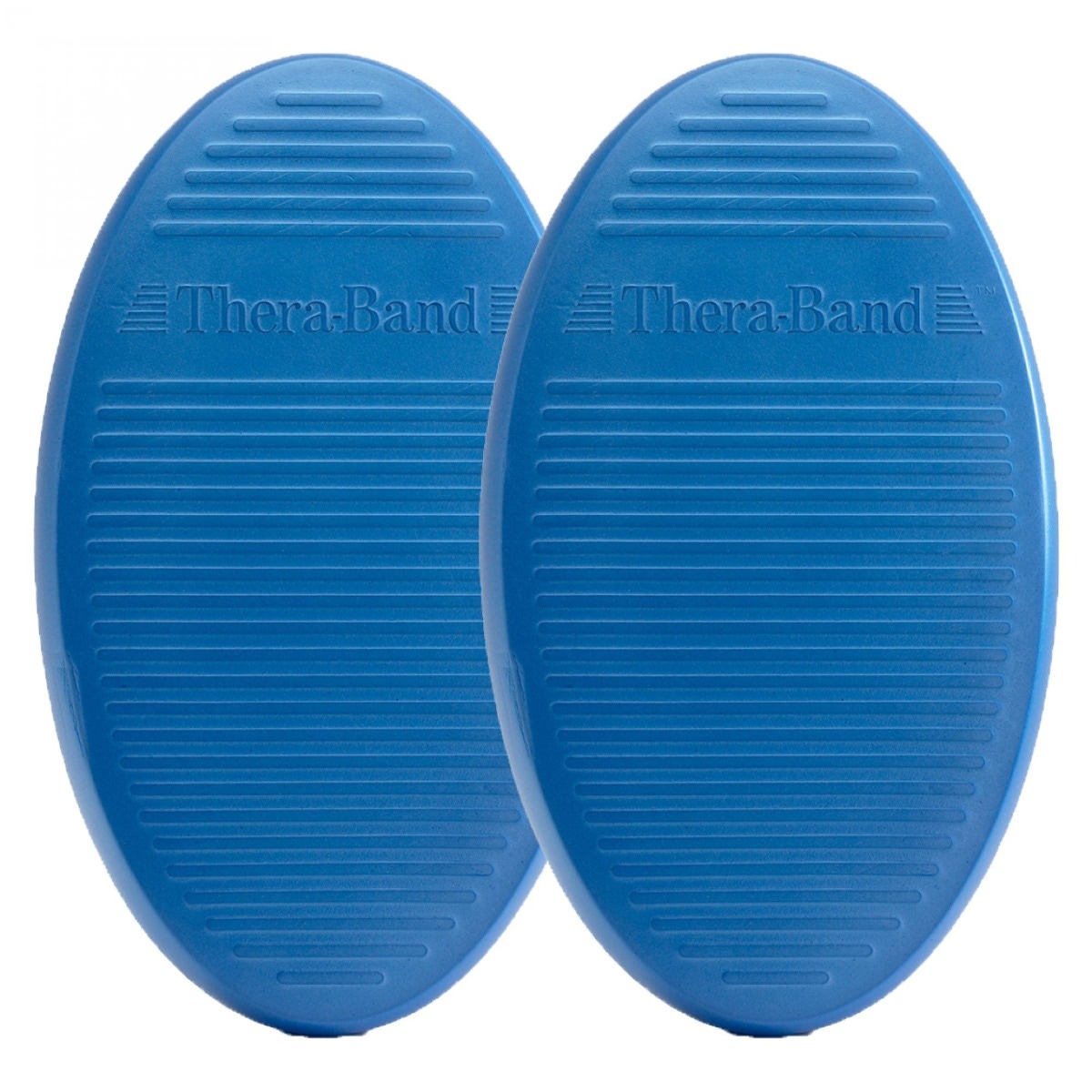When looking for a resistance band, it’s easy to get overwhelmed by all of the choices. Should you get the band or the tubing? The red or the blue? We’re here to help your patient find the right THERABAND resistance band for their rehab or strength training needs. Share this with your patients to answer their frequently asked questions about resistance bands and resistance levels.
FAQ About Resistance Bands and Resistance Band Levels
Questions About Resistance Bands
Questions About What THERABAND Resistance Band to Buy
Questions About Using THERABAND Resistance Bands
What Do Others Say About Resistance Bands?
Questions About Other THERABAND Products
In Summary
Questions About Resistance Bands
What is a resistance band?
It’s an elastic band commonly used for strength training and muscular rehabilitation. They are typically made from latex or synthetic rubber and come in various resistance levels and shapes (flat bands, loops, tubes, etc.).
Who invented resistance bands?
Elastic resistance has been used for over 100 years. The first patent for a product similar to today’s resistance band was filed in 1895 in Switzerland by Gustav Gossweiler. His stretchy rope with handles was also patented in the United States a year later in 1896. Gossweiler described his invention as a “gymnastic apparatus”. In 1901, the Whitely Exerciser, an elastic cord and pulley system, was marketed as a strength training tool.
Forty years ago, in 1978, two physical therapists approached what was then the Hygenic Corporation with a concept for using their Dental Dam product for physical therapy. This led to the invention of the original flat THERABAND resistance band and the corresponding progressive resistance system. Today this brand is a trusted household name in resistance training and has expanded its portfolio to include other resistance bands and fitness products.
Why should I use a resistance band?
Resistance bands are portable.
- You can bring them with you when traveling and use them in your hotel room or at a park. Resistance bands are easier to fold and slip into a suitcase, rather than bringing dumbbells, which add extra weight.
Mix up your fitness routine.
- You can use the band to increase the difficulty of typical exercises like push-ups. Or you can explore new exercises that work your entire body. The bands are also a great option for warming up before heavy lifting sessions.
There’s a band for everyone.
- Resistance band levels are available from very light for rehabilitation to extra heavy for elite training. This means there’s an option that fits any fitness level. THERABAND makes it easy to find your perfect fit by using a color-coded progression system.
Questions About What THERABAND Resistance Band to Buy
What color THERABAND resistance band should I use?
The THERABAND color-coded resistance system makes it easy to find the perfect fit and ensures you get the same level of resistance every time. You can even double up the bands or use two pieces that are the same length to increase the resistance.

THERABAND also offers High Resistance Bands. It expands the resistance range and offers higher levels for advanced rehabilitation, elite athletes, and people looking for a tougher workout.
What type of THERABAND resistance band should I buy?
This is a great place to get started. The standard, flat band is typically what people think of when they hear the words “resistance bands”. The full range of THERABAND colors allows users to find the right resistance for a variety of muscle exercises.
THERABAND CLX Resistance Bands
If you’re looking for more variety, you should try these bands. The THERABAND CLX is a resistance band with loops. The loops can be used as hand or foot holds and open up even more exercise options.
THERABAND Resistance Band Loop
These premade loops eliminate the hassle of tying your resistance band for exercises that require a loop. You’ll save money and don’t need to worry about the knot coming undone.
Tubing is often used interchangeably with flat resistance bands. They can be used for many of the same exercises, so part of your choice comes to personal preference. Tubing is more commonly used when working with additional equipment (like tying it around a ballet barre). Some tubing also comes with padded handles.
THERABAND High Resistance Bands
Looking for more of a challenge? THERABAND High Resistance Bands provide new levels of resistance for strength training, advanced rehabilitation, and sports performance. These bands are the perfect match for upper and lower body workouts, offering THERABAND levels from 15 to 50 pounds of resistance. Learn more about this new option!
The THERABAND VECTOR is a device that contains THERABAND Tubing with Kevlar string to reduce the snap-back risk. The device allows multi-vector exercises and makes it easy to change resistances with just the twist of the cap. Excellent for fitness gyms, therapy clinics, and personal use, adjust the THERABAND resistance levels from 10 to 100 lbs and then get started with functional sport, rehabilitation, or fitness exercises.
Should I buy a non-latex THERABAND Resistance Band?
Yes, you should use a THERABAND Non-Latex Resistance Band or THERABAND CLX Resistance Band (both made of synthetic rubber) if:
- Allergies: If you’re allergic to latex, the non-latex version prevents allergic reactions from hives to anaphylactic shock.
- Latex-free facility: If your hospital or clinic has a no-latex policy, these bands are a perfect choice to keep your patients safe.
- Personal preference: If you prefer to use products that don’t contain latex, these are the bands for you.
Otherwise, you can also use THERABAND Latex Resistance Bands or THERABAND High Resistance Bands, made from natural rubber latex.
Should I buy pre-cut resistance bands?
Pre-cut resistance bands are an excellent choice for personal use and are available in all the THERABAND colors. These options are all pre-cut to five feet each. Pre-packaged bands also make it easier to hand out in the clinic or sell to customers.
|
This kit is perfect for rehab patients to use at home. It can also be part of your exercise routine. |
If you’re looking for a more challenging workout, use this advanced kit. |
If you like using a looped band, you can purchase the CLX in a five foot option too. |
These individually wrapped bands are easy to hand out at the start of a fitness class or in a therapy office. |
Larger dispenser kits are best if you want to choose the band length. You can cut them to custom lengths for a perfect fit. The dispensers are an excellent addition in rehabilitation clinics, hospitals, and gyms that use a lot of bands.
|
Choose between the larger 6, 50 and 100 yard boxes, then easily cut off various lengths for your patients. |
The non-latex version is also available in bulk sizes (25 or 50 yards). It’s the perfect choice for no-latex facilities. |
Love the loops? Choose a 25 yard box of THERABAND CLX resistance bands. |
What length THERABAND Band should I use?
It’s important to make sure the band isn’t too short or you’ll risk the potential for a band breaking. The pre-cut length of five feet works for most people. In general, use a length of band equal to the limb you’re exercising. The rolls allow you to determine proper length for your body and cut the band to your perfect fit.
Questions About Using THERABAND Resistance Bands
How do I start exercising with a THERABAND resistance band?
Use your resistance band or tubing for the exercises you already know. Start with bicep curls. Just stand on the middle of the tubing, holding each end. Bend your elbows and bring your hands toward your shoulders to complete a curl. Hold, keeping your elbows by your side. Then slowly return, straightening your arms.

Use a THERABAND loop or a tied resistance band for this next exercise. Step into the loop so it is around both ankles. Keeping the loop around your ankles, take a step to the left, working against the resistance of the band. Bring your feet back together, then repeat on the other side. This exercise strengthens your hip abductors. Resistance bands can be used for upper and lower body exercises.

Resistance bands can even be used on areas that are typically harder to focus on, like your ankles. This ankle plantarflexion exercise is easy to do while seated. Hold one end of the band in each hand and extend one leg with the band looped around it. Push your foot down against the band then slowly return.

Ready for a full-body workout?
Use your THERABAND CLX for a twenty-minute workout at home or on the go.
Wondering what other exercises you can do with a THERABAND resistance band? Check out our full library of THERABAND exercises on the Performance Health Academy website.
How do I tie/knot my THERABAND resistance band?
Hold the band with one end in each hand. Wrap one section around the other, then cross over again and bring one end through the loop that forms. Pull tight to form the first knot. Repeat so the band is double knotted securely. Before each use, make sure the knot is still tight and that it is not wearing/fraying.
If you don’t want to tie your band, you can use THERABAND Loops instead!
Should I use accessories with my THERABAND resistance band?
A THERABAND Accessories Kit increases the number of exercises you can do with your band. Whether you need accessories depends on how you use your bands. The assist strap offers a sturdy anchor point and is great for looping around your foot. The handles enhance your comfort while holding the band, thanks to their soft padding. And the door anchor secures the band before performing overhead exercises and workouts that require an anchored band.
If you’re using a CLX band, you can use the loops instead of an assist strap or handle, but you should use a CLX door anchor if you need to secure the end.
Clinics and gyms will also benefit from a wall station. It mounts to the wall and provides multiple anchor points for strength training. You can choose between a THERABAND Wall Station or a THERABAND CLX Wall Station.

How do I attach my handle, door anchor, or assist strap to my THERABAND?
Follow the image below to securely loop your hand or tubing twice through the accessory strap. When using the door anchor, make sure you are standing on the correct side of the door. You should be on the side that requires you to pull the door shut. Locking the door will also help your band’s security.
Can I use my resistance band in the pool?
Yes, the bands can be used in a chlorine pool, but they will deteriorate faster. After each pool use, rinse the bands in tap water and hang them to dry. Be sure to inspect the bands for wear and tear before use.
When should I replace my resistance band?
Your elastic resistance band should last for many months before you need to replace it. Always inspect your band before use and replace it if there are any signs of wear, including cracks, small tears, or abrasions. Make sure to look closely at the attachment point, as this is where signs of use are most commonly shown. You may need to replace bands more frequently (every 1-2 months) if they are used frequently in clinics or exposed to extreme temperatures.
What safety precautions should I take when using THERABAND resistance bands?
Follow the steps above to inspect your bands before use. Bands may break if they have small tears or are stretched past 300% elongation (4 times resting length). You should remove jewelry and be aware of fingernails and other sharp objects that could cause tears. Always wear suitable eye protection during use.
What Do Others Say About Resistance Bands?
Why do therapists, athletic trainers, and other professionals use THERABAND Resistance Bands with their patients and athletes?
"I have utilized elastic resistance in my clinic for many years. THERABAND is the trusted name in elastic resistance. THERABAND has come out with their new elastic resistance tool in therapy - the CLX Resistance Band. What is unique about the CLX is that it can help bridge the gap between single plane exercises to multi plane exercises, allowing functional training and functional movement. Changing the game in rehabilitation."
- Shawn Burger, PT, DPT, MPT
What does the research say about resistance bands?
Many studies have been performed using resistance bands. Some look at their effectiveness for strength training. One study found that THERABAND resistance band levels and dumbbells achieve similar muscle activation suggesting either could be used in clinics.
Others focus on how resistance exercises can improve quality of life. A different study focused on knee arthritis and found that using THERABAND resistance bands and THERABAND Stability Trainers improved quality of life in osteoarthritis patients.
There have even been studies looking at how many calories are burned during elastic resistance workouts. THERABAND elastic bands are a great choice for progressive resistance training because the first six color-coded levels all increase 25% in resistance from the previous level at 100% elongation.
You can find out more about the use of THERABAND resistance band in rehabilitation and strengthening research on Performance Health Academy.
And if you’re looking for additional exercises, check out this book Strength Band Training with over 160 exercises and programs using THERABAND resistance bands.
What do customers say about THERABAND resistance bands?
THERABAND Beginner Kit (Non-Latex)
⭐⭐⭐⭐⭐Easily Stored Away “These have worked wonders in only a week as far as my shoulder rehab. They are portable, easily stored away, and can be used to exercise almost any area you want to work on with no set-up time and no bulky equipment to store or take up space in your house. I wish I had known before how great these are. My doctor recommended them, my physical therapist said the same thing as well, and they do the job.”
- Rainier88, Amazon Customer
THERABAND Advanced Kit (Latex)
⭐⭐⭐⭐⭐Suggest Getting Two of Each Color “I use them everyday, very happy with them. I bought two black, and two blue so I could use them to exercise both arms together during the same exercise. I like that I can dynamically adjust the tension as my muscles start to tire by quickly adjusting my hold on the straps. I am seeing good results. I used to be a 'free weights' only guy, not anymore, replaced the free weights with the bands, gives me more control over movement & taking muscle failure to the bitter, bitter, bitter end.”
- Mark Michaels, Amazon Customer
⭐⭐⭐⭐⭐Great Alternative “I have free weights but they get to be expensive the more weight you add. I was introduced to THERABANDs during physical therapy. They are lightweight and easy to store, you can even take them to work or on vacation. You can do about a million things with them and really get a FULL body workout. I have several different bands...If you need more resistance you can double up a single band or double up with other band colors to up the resistance. These are a no brainer but I'd not use other brands.”
- valentineslover, Amazon Customer
Questions About Other THERABAND Products
What is the difference between a THERABAND Resistance Band and a THERABAND Stretch Strap?
THERABAND resistance bands are designed for muscle strengthening and are made of rubber latex or synthetic rubber. The THERABAND Stretch Strap is designed as an aid for dynamic stretching. It’s made of double stitched nylon and latex elastic.

What other products does THERABAND make?
Beyond resistance bands, the THERABAND brand makes a variety of other fitness and exercise products, including balance trainers, exercise balls, hand exercisers, foam rollers, and kinesiology tape. Here are just a few of our other products.
In Summary
Elastic resistance bands are lightweight, easy to store, and cost less than a gym membership. The variety of THERABAND color-coded resistances means they can be used by everyone, from rehab patients to elite athletes. Ready to begin your workout? We suggest starting with a five-foot CLX resistance band with loops and these exercises!
References
- Page, P. and Ellenbecker, T. (2003). The Scientific and Clinical Application of Elastic Resistance. Human Kinetics. Retrieved from https://bit.ly/308dYEf
- The History of Resistance Bands. (n.d). Retrieved from https://bit.ly/2HbybBG
- THERABAND Academy. (n.d.) Frequently Asked Questions (FAQ). Retrieved from https://bit.ly/2DWptp2
- THERABAND. (n.d.) About Us. Retrieved from https://bit.ly/2PWLzw9
Medical Disclaimer: The information provided on this site, including text, graphics, images, and other material are for informational purposes only and are not intended to substitute for professional medical advice, diagnosis, or treatment. Always seek the advice of your physician or other healthcare professional with any questions or concerns you may have regarding your condition.








 France
France Australia
Australia





















